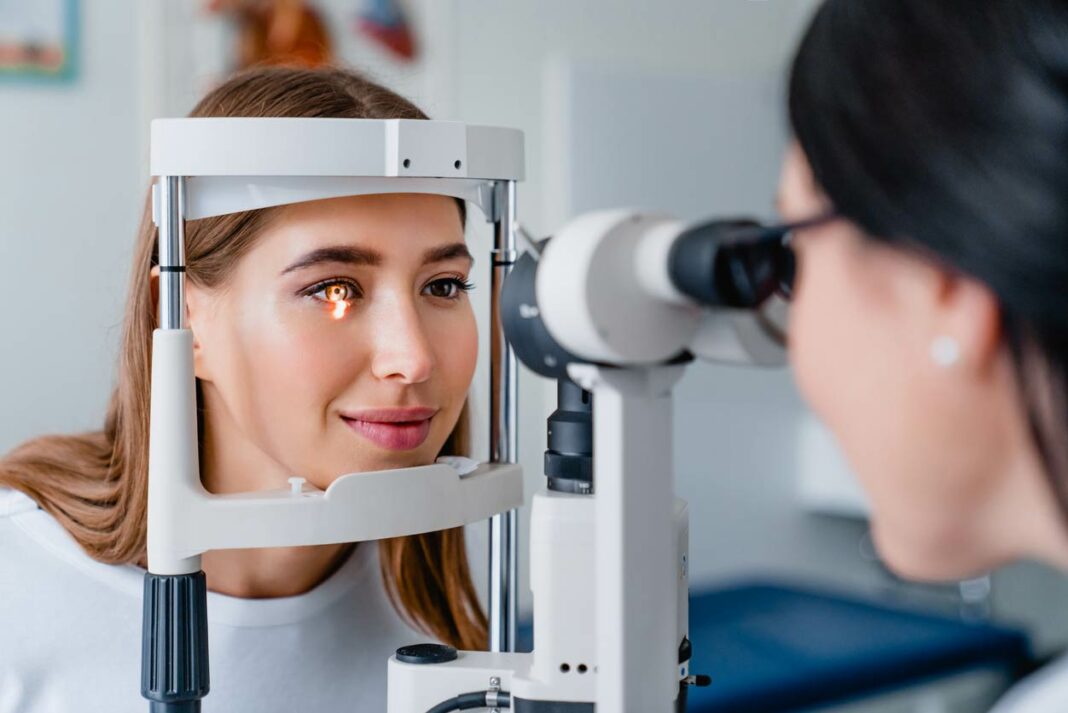The crystalline lens, the eye’s natural lens, becomes opaque due to a cataract. It is a normal ageing process, although some factors can advance or even precipitate its appearance. It is the most frequent eye disease in people over 60 years of age and the main cause of preventable blindness.
In this case, for us to see the image, it has to reach the retina, for which two other structures are required: the cornea and the lens. The latter becomes more opaque over the years, which translates into a decrease in visual acuity.
The crystalline lens gradually loses its elasticity and begins to harden from 45-50 years of age, which is when presbyopia or tired eyesight usually appears. Around 65-70 years of age, it has already lost a large part of its transparency, although in some people it takes longer.
Therefore, sooner or later, all people end up with cataracts. There are not many situations where it doesn’t.
Causes
Most cataracts are due to ageing, but other factors have been described that influence their appearance at earlier ages:
- Congenital cataracts, that is, present from birth. There is frequently a family history.
- Certain diseases, such as diabetes, uveitis, arterial hypertension …
- Nearsighted people tend to develop cataracts earlier than non-sighted people.
- Prolonged use of certain medications, especially corticosteroids.
- Exposure to ionising radiation (for example, in radiotherapy treatments ).
- Eye trauma.
- Having undergone surgery for another eye problem.
- Smoking
- Obesity
There are some wrong beliefs. For example, cataracts do not appear due to excessive use of the view, or by forcing it. But some professions are indeed more closely linked to their appearance. This is the case with glassblowers, who are exposed to high temperatures and the intense light of the oven.
There also seems to be a relationship between exposure to sunlight and the development of cataracts, which is why ophthalmologists recommend sunglasses as prevention.
Symptoms
The following symptoms are common in cataract:
- The sensation of blurred vision, cloudy or hazy vision.
- Intolerance to intense light (photophobia, with possible halos around sources of light (car headlights, street lamps).
- Altered perception of colours, as if they had lost their intensity.
- In some cases, some improvement in near vision is perceived, as well as changes in the prescription of glasses or contact lenses.
- Diplopia (double vision in the eye where the cataract is occurring) can occur.
It must be taken into account that the symptoms may be more or less intense depending on the size and location of the areas of lens opacity. For example, if it is located on the outer edge of the natural lens, the view does not change; but if the clouding is located near the centre of the lens, it usually interferes with vision.
Prevention
Although cataracts are very common and occur due to ocular ageing, avoiding the risk factors associated with their development as much as possible can delay their appearance.
These are some of the measures that can help in prevention:
- Quit smoking.
- Treat obesity and high blood pressure.
- Use sunglasses to avoid solar ultraviolet rays.
- Avoid the continued use of corticosteroids.
- A healthy diet, with a high content of antioxidants.
In conclusion
The most frequent cataract is the senile cataract, which usually appears between 65 and 70 years of age. But some people develop it at an earlier age, around 55 years of age, and there may even be those who do not suffer from it until they are 80.
There are other types of cataracts:
- Secondary cataracts: are those that appear after surgery for another eye problem, such as glaucoma.
- Traumatic cataracts: appear after having suffered a blow to the eye.
- Congenital cataracts: These are cataracts that appear at birth or soon after. Because of their small size, they frequently do not impair vision.
- Radiation cataracts
- Toxic cataracts: are those associated with the chronic use or abuse of some drugs, such as corticosteroids.
They can also be classified according to the location of the lens in which they develop:
- Nuclear Falls: The opacity is found mainly in the nucleus or centre of the lens.
- Cortical cataracts: The cortex or envelope of the lens becomes opaque.
- Posterior subcapsular cataracts: They develop in the outermost layer of the lens, the posterior capsule.
Diagnosis
In the event of loss of vision, it is advisable to go to the ophthalmologist, who will use various methods to diagnose cataracts:
- Measurement of far and near visual acuity by optometry, for which screens are used where there are several letters or figures arranged from largest to smallest.
- Ocular examination with a slit lamp, allows the ocular structures to be viewed at a much larger-than-life size. In this way, the doctor can see the exact location of the cataract and the extent of its opacity.
Treatments
The only effective treatment is surgery, which consists of aspirating the contents of the opaque lens and replacing it with an intraocular lens. The lenses that are introduced are in constant technological evolution and can be of several types:
- Monofocal intraocular lenses: They correct distance vision, but the patient still needs glasses to see near.
- Multifocal intraocular lenses: They allow vision at various distances: near, medium and far, depending on the needs of each patient. They can be bifocal or trifocal.
- Toric intraocular lenses: They are used to correct high astigmatism.
Other data
It has always been believed, and this was confirmed by ophthalmologists, that people with cataracts could determine when they wanted to have them surgically removed, since, unlike other eye diseases, a delay in treatment did not worsen the final result.
However, this idea is changing. Earlier, it was recommended to wait until the cataract was very advanced, now it is advisable not to wait so long.
The ideal is to carry out the intervention when the person begins to see their vision limited and affects their lifestyle, although everything will depend on the characteristics of each patient and the deterioration of their visual quality, as well as whether they suffer from or not other associated diseases.
The ophthalmologist at God Service Eye Clinic believes that it must be taken into account “that early detection and timely intervention, without allowing the cataract to develop excessively, allow surgery to be performed in optimal conditions while minimising risks.”
Also Read:
- 9 Must Know Things About Medical Billing In Revenue Cycle Management
- 10 Ways To Reduce Your Knee Pain
- Shubi Husain Among Awardees Of India’s National HealthCare Awards 2023
- Medical Billing Services in Texas – A Complete Overview
- List Of Top 10 Best Lady Gynaecologists In Delhi NCR – N4M Surveys
- Allergies And Sensitivities In Pets: Identifying And Managing Triggers
~ News4masses is now also on Google news
~ If you want to contribute an article / story, please get in touch at: news4masses[at]gmail[dot]com




























